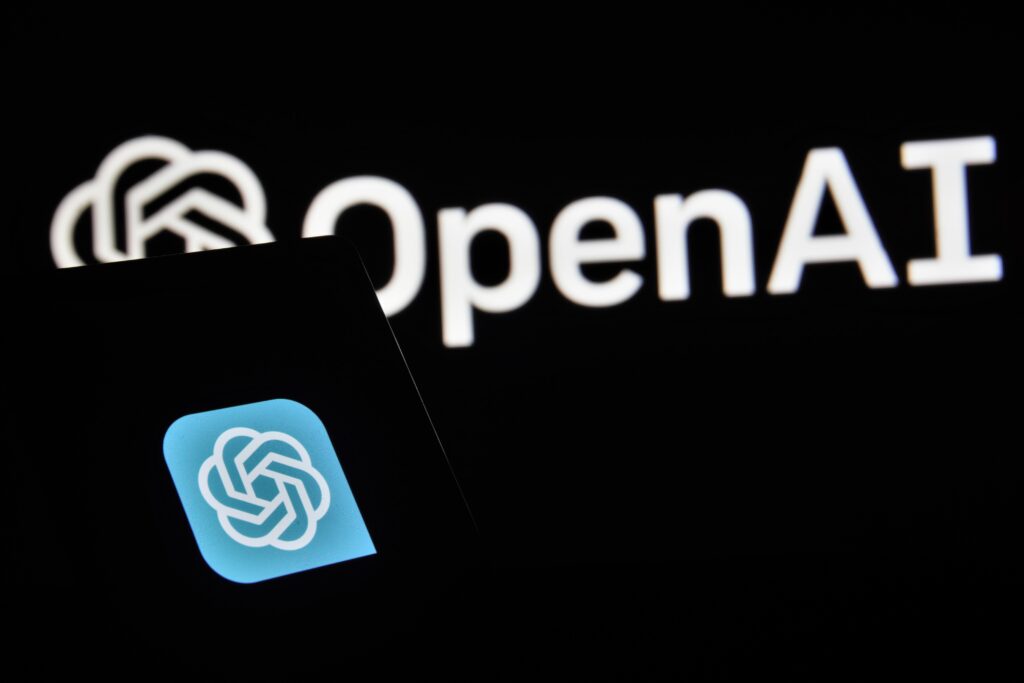In 2024, the use of generative AI is expected to fuel stronger phishing campaigns and information operations at an unprecedented scale. This article explores the implications of this technology on cybersecurity, particularly in the areas of phishing, cyberattacks, and cybercrime. With the potential to mimic human behavior and create realistic content, generative AI poses a significant threat to organizations’ security measures. As businesses strive to stay ahead in the evolving landscape of cybersecurity, it becomes increasingly crucial to understand and prepare for these emerging threats. Stay informed to protect your sensitive information and maintain the integrity of your operations in an era where AI is becoming an integral part of cybercriminals’ arsenals.

Generative AI and Phishing
Introduction to Generative AI
Generative AI, also known as generative adversarial networks (GANs), is a subset of artificial intelligence that uses machine learning techniques to generate new data based on patterns and examples from existing data. Unlike traditional AI models that rely on explicit instructions, generative AI learns from data to create original content such as images, text, or even videos. It has shown significant advancements in various fields, including art, music, and healthcare.
How Generative AI can fuel stronger phishing campaigns
Phishing is a type of cyberattack where malicious actors attempt to trick individuals into revealing sensitive information, such as passwords or credit card details, by masquerading as a trustworthy entity. Generative AI can fuel stronger phishing campaigns by automating the creation of convincing phishing emails, websites, or even voice phishing (also known as vishing) calls. By leveraging GANs, attackers can generate realistic-looking content that mimics legitimate communication, making it more difficult for victims to distinguish between genuine messages and phishing attempts.
The role of Generative AI in information operations at scale
Information operations refer to the deliberate use of information to manipulate opinions, sow discord, or achieve strategic objectives. Generative AI plays a crucial role in conducting large-scale information operations by enabling the creation of fake news articles, social media posts, or even deepfake videos. These AI-generated content can be used to spread misinformation, influence public opinion, and exploit societal vulnerabilities. The scalability and efficiency of Generative AI make it an attractive tool for malicious actors engaged in information warfare.
Potential risks and consequences of Generative AI-powered phishing
Generative AI-powered phishing presents significant risks and consequences for both individuals and organizations. The use of AI-generated content in phishing campaigns increases the likelihood of successful attacks, as it becomes more challenging to detect and differentiate between genuine and fake communication. This can lead to financial losses, data breaches, reputational damage, and even legal consequences for both victims and organizations involved. The widespread adoption of Generative AI in phishing also poses challenges for cybersecurity professionals, who must continuously evolve their detection and prevention strategies to keep up with the rapidly advancing threat landscape.
Advancements in Generative AI
Overview of recent advancements in Generative AI
In recent years, Generative AI has witnessed remarkable advancements, driven by the development of more sophisticated algorithms and models. Techniques such as deep learning and reinforcement learning have significantly improved the ability of GANs to generate high-quality and realistic content. State-of-the-art models, such as OpenAI’s GPT-3, have demonstrated impressive capabilities in natural language generation, enabling the creation of coherent and contextually relevant text. These advancements have paved the way for the integration of Generative AI into various applications, including phishing campaigns.
The impact of improved algorithms and models on phishing campaigns
As Generative AI algorithms and models continue to evolve, the impact on phishing campaigns becomes increasingly significant. Improved algorithms can generate highly convincing phishing emails that closely mimic the writing style, tone, and formatting of legitimate messages. Furthermore, advancements in deepfake technology allow attackers to create highly realistic audio or video content that can be used in social engineering attacks. These advancements make it increasingly challenging for individuals and even security professionals to differentiate between genuine and fraudulent communication.
Integration of Generative AI with social engineering techniques
Social engineering is the practice of manipulating individuals into divulging sensitive information or performing specific actions. Generative AI can enhance social engineering techniques by providing attackers with realistic content that can manipulate emotions, exploit trust, and effectively deceive victims. For example, AI-generated phishing emails may leverage personal information, social cues, or timely events to increase their chances of success. By integrating Generative AI with social engineering tactics, attackers can create highly personalized and persuasive phishing campaigns that are difficult to resist.

Phishing Campaigns in 2024
Current state of phishing campaigns and their effectiveness
Phishing campaigns have become increasingly prevalent and sophisticated in recent years. Attackers leverage various techniques, such as email spoofing, URL obfuscation, and social engineering, to trick individuals into divulging confidential information. Despite the efforts of cybersecurity professionals and increased awareness among individuals, phishing attacks remain highly effective. The success of phishing campaigns often relies on exploiting human vulnerabilities, such as curiosity, fear, or urgency, rather than solely relying on technical vulnerabilities.
Predictions for the future of phishing campaigns
In the future, phishing campaigns are expected to become even more sophisticated and difficult to detect. Generative AI will play a crucial role in enhancing the sophistication of these attacks by generating highly realistic and personalized content tailored to individual victims. Attackers will leverage advanced machine learning algorithms to understand the behavior, preferences, and vulnerabilities of their targets, enabling them to craft highly convincing phishing attempts. As a result, the success rate of phishing attacks is likely to increase, posing significant cybersecurity challenges.
How Generative AI will enhance the sophistication and success rate of phishing attacks
Generative AI will enhance the sophistication and success rate of phishing attacks by enabling attackers to create highly personalized and contextually relevant content. AI algorithms will analyze large datasets to identify patterns, trends, and preferences that can be exploited in phishing campaigns. For example, AI-powered phishing emails can mention recent events, use language specific to the recipient’s industry, or incorporate personal details to increase credibility and deceive individuals. Generative AI will also allow attackers to automate the creation of diverse phishing content, making it more challenging for traditional detection methods to keep pace.
Information Operations at Scale
Understanding the concept of information operations at scale
Information operations at scale involve the deliberate dissemination of information, often false or misleading, to influence public opinion, shape narratives, or achieve strategic objectives. Generative AI plays a crucial role in conducting information operations at scale by automating the creation of synthetic content that can be rapidly distributed across various platforms, such as social media, online forums, or news outlets. The scalability and efficiency of Generative AI make it particularly effective in amplifying certain messages or narratives to reach a wide audience.
The role of Generative AI in conducting large-scale information operations
Generative AI enables the creation of AI-generated content, such as fake news articles, social media posts, or even deepfake videos, that can be used to manipulate public opinion and advance certain agendas. By automating the generation and dissemination of synthetic content, attackers can amplify their messaging and target specific demographics or communities. Generative AI algorithms can analyze vast amounts of data to identify vulnerabilities, biases, or divisive topics within a society, allowing attackers to exploit these factors and manipulate public discourse.
Potential targets and objectives of information operations in 2024
In 2024, potential targets of information operations may include political elections, social movements, or global events. Attackers may seek to influence election outcomes by spreading disinformation or polarizing narratives. Social movements could be manipulated through the creation of AI-generated content designed to provoke outrage or incite violence. Additionally, global events, such as public health crises or geopolitical conflicts, may be exploited to sow discord, create confusion, or advance specific geopolitical agendas. Generative AI-powered information operations have the potential to shape public opinion, destabilize democratic processes, and undermine social cohesion.

Implications for Cybersecurity
Challenges faced by cybersecurity professionals in combating Generative AI-powered phishing campaigns
Generative AI-powered phishing campaigns pose significant challenges for cybersecurity professionals. Traditional detection methods, such as rule-based filters or signature-based approaches, may fail to identify AI-generated phishing content due to its highly realistic nature. Moreover, the continuous evolution of Generative AI algorithms requires cybersecurity professionals to constantly adapt their detection mechanisms to keep up with emerging threats. The vast scale and automation of Generative AI also make it challenging to detect and mitigate attacks in real-time, particularly when attackers leverage sophisticated techniques alongside AI-generated content.
The need for advanced detection and prevention systems
The rise of Generative AI-powered phishing calls for advanced detection and prevention systems that can effectively identify and mitigate AI-generated attacks. Machine learning algorithms, combined with behavioral analytics and anomaly detection, can help identify patterns and abnormalities indicative of phishing attempts. Advanced threat intelligence platforms and AI-powered security solutions can analyze large datasets to identify emerging AI-generated trends and proactively update security measures. Collaborative efforts between industry stakeholders, cybersecurity experts, and academia are crucial for developing and implementing advanced detection and prevention systems.
Collaborative efforts between technology companies, cybersecurity experts, and law enforcement
Addressing the threats posed by Generative AI-powered phishing requires collaborative efforts between technology companies, cybersecurity experts, and law enforcement agencies. Technology companies must invest in research and development to stay ahead of attackers’ capabilities and develop innovative security solutions. Collaboration with cybersecurity experts can provide valuable insights and expertise to detect and mitigate emerging threats. Law enforcement agencies play a critical role in investigating and prosecuting cybercriminals involved in Generative AI-powered phishing campaigns. By working together, these stakeholders can enhance cybersecurity measures and protect individuals and organizations from evolving threats.
Mitigation Strategies
Effective mitigation strategies against Generative AI-powered phishing
Mitigating Generative AI-powered phishing requires a multi-faceted approach that combines technological solutions, employee training, and proactive defense strategies. Some effective mitigation strategies include:
- Implementing AI-powered security systems: Utilize advanced security solutions that leverage machine learning and behavioral analytics to detect AI-generated phishing attacks.
- Multi-factor authentication: Implement strong authentication measures, such as biometrics or hardware tokens, to reduce the risk of account compromise through phishing.
- Regular phishing awareness training: Educate employees about the risks of phishing attacks and provide training to recognize and respond to sophisticated phishing attempts.
- User behavior analytics: Monitor user behavior patterns and employ analytics to identify suspicious activities or deviations from normal behaviors.
- Incident response and recovery: Develop a robust incident response plan that includes timely detection, containment, and recovery measures in the event of a successful phishing attack.
- Collaboration and information sharing: Foster collaboration among industry peers, information sharing platforms, and threat intelligence providers to stay updated on emerging phishing techniques and countermeasures.
Training and education for employees to recognize and respond to sophisticated phishing attempts
Employee training and education are critical in mitigating Generative AI-powered phishing attacks. Training programs should focus on raising awareness about the evolving threat landscape and equipping employees with the knowledge and skills to identify and respond to sophisticated phishing attempts. This includes teaching employees how to scrutinize email addresses, check for misspellings or grammatical errors, and avoid clicking on suspicious links or attachments. Regular simulated phishing exercises can also help assess employees’ readiness and reinforce best practices for identifying and reporting phishing attempts.
Utilizing AI-powered defense systems to detect and block phishing attacks
AI-powered defense systems can play a crucial role in detecting and blocking Generative AI-powered phishing attacks. These systems use AI algorithms and machine learning techniques to analyze various indicators of compromise, such as email headers, URLs, or content patterns, to identify malicious phishing attempts. By leveraging AI, these defense systems can continuously learn and adapt to evolving phishing techniques, enhancing their detection capabilities. Additionally, AI-powered systems can automate the blocking or flagging of suspicious emails, reducing the risk of successful phishing attacks.

Ethical Concerns
The ethical implications of using Generative AI for malicious purposes
The use of Generative AI for malicious purposes raises significant ethical concerns. By harnessing AI-generated content for phishing campaigns, attackers exploit the trust and vulnerability of individuals, potentially causing financial, emotional, and psychological harm. The creation and dissemination of highly convincing and personalized AI-generated content blur the boundaries between truth and deception, placing societal trust and wellbeing at risk. Moreover, the use of Generative AI in information operations can undermine democratic processes, manipulate public discourse, and erode trust in key institutions.
Balancing technological advancements with responsible and ethical use
As technology continues to advance, it is essential to strike a balance between technological innovations and responsible, ethical use. While Generative AI offers significant potential for various applications, including cybersecurity, it also poses risks when used maliciously. Stakeholders, including technology companies, researchers, policymakers, and the cybersecurity community, must collaborate to establish ethical guidelines and best practices for the development, deployment, and use of Generative AI. Responsible AI governance frameworks can help ensure that AI technologies are developed and deployed in a manner that prioritizes the well-being and safety of individuals and society at large.
Regulatory and legal challenges in addressing Generative AI-powered phishing
Addressing Generative AI-powered phishing poses regulatory and legal challenges due to the rapid pace of technological advancements and the global nature of cyber threats. Regulators and policymakers must adapt to the evolving threat landscape and develop appropriate frameworks to address the risks associated with Generative AI-powered phishing. This includes defining clear responsibilities and accountability for technology companies, establishing legal frameworks that deter cybercriminals, and fostering international collaboration to combat cross-border cybercrime. Additionally, industry standards and best practices can play a crucial role in guiding organizations’ security measures and promoting responsible AI use within the cybersecurity domain.
Industry Response and Preparedness
Actions taken by technology companies to address the rise of Generative AI-powered phishing
Technology companies have recognized the risks posed by Generative AI-powered phishing and have taken several actions to address this growing threat. These actions include:
- Research and development: Companies invest in research and development to develop advanced detection algorithms and mechanisms that can identify AI-generated phishing content.
- Collaboration with cybersecurity experts: Technology companies collaborate with cybersecurity experts to gain insights into emerging threats and develop effective countermeasures.
- Integration of AI-powered security solutions: Companies integrate AI-powered security solutions into their products and services to detect and mitigate Generative AI-powered phishing attacks.
- User education and awareness: Technology companies prioritize user education and awareness by providing resources, training materials, and regular updates on the latest phishing techniques and prevention strategies.
Collaboration between industry stakeholders to develop countermeasures
Collaboration between industry stakeholders, including technology companies, cybersecurity experts, academia, and government agencies, is essential in developing effective countermeasures against Generative AI-powered phishing. By sharing threat intelligence, research findings, and best practices, stakeholders can collectively enhance their understanding of emerging threats and develop coordinated strategies to mitigate them. Public-private partnerships can foster collaboration and facilitate information sharing, enabling faster response times, more robust threat detection, and effective prevention measures.
The importance of proactive defense strategies
Proactive defense strategies are crucial in mitigating the risks posed by Generative AI-powered phishing. Rather than solely relying on reactive measures, organizations must take a proactive approach to identify and prevent phishing attacks. This includes regularly updating security systems, implementing advanced threat detection mechanisms, and conducting simulated phishing exercises to assess and improve employee preparedness. By adopting proactive defense strategies, organizations can enhance their resilience to Generative AI-powered phishing attacks and reduce the likelihood of successful compromises.

The Human Factor in Phishing
Understanding the psychology behind successful phishing attacks
Successful phishing attacks often exploit human vulnerabilities and psychological factors to manipulate individuals into taking specific actions. These psychological techniques include:
- Authority: Phishing attempts may pose as trusted authorities, such as banks or government agencies, to gain individuals’ trust and compliance.
- Urgency: Attackers create a sense of urgency, such as time-limited offers or threats of consequences, to bypass individuals’ critical thinking and evoke impulsive responses.
- Curiosity: Phishing emails or messages may pique individuals’ curiosity by offering exclusive information or enticing offers, compelling them to click on malicious links or attachments.
- Fear: Attackers leverage fear tactics, such as warnings of account suspension or data breaches, to prompt individuals to disclose sensitive information.
Training individuals to be vigilant and cautious in the face of advanced phishing attempts
Training individuals to be vigilant and cautious is crucial in mitigating the risks of advanced phishing attempts. By raising awareness about the tactics and techniques employed by attackers, individuals can better recognize and respond to phishing attempts. Training programs should emphasize the importance of verifying the authenticity of communication, avoiding clicking on suspicious links or attachments, and reporting potential phishing attempts to the appropriate channels. Regular training sessions, ongoing education, and awareness campaigns can empower individuals to become the first line of defense against phishing attacks.
The role of user awareness and education in preventing successful phishing attacks
User awareness and education play a vital role in preventing successful phishing attacks. By educating users about the evolving tactics employed by attackers, individuals can become more cautious and discerning when interacting with potentially malicious communication. Awareness campaigns can provide guidance on identifying common phishing red flags, verifying the legitimacy of URLs or email addresses, and reporting suspected phishing attempts. Organizations should prioritize user awareness programs and foster a culture of cybersecurity awareness to minimize the likelihood of successful phishing attacks.
Looking Ahead: Future Threats and Countermeasures
Anticipated advancements in Generative AI and their potential impact on phishing
Anticipated advancements in Generative AI are likely to have a significant impact on the sophistication and effectiveness of phishing attacks. As AI algorithms continue to improve, attackers will have access to more advanced tools for creating convincing and personalized phishing content. Generative AI may enable the creation of AI-generated voice phishing (vishing) calls that accurately mimic human voices and behaviors. Moreover, advancements in deepfake technology may make it increasingly difficult to distinguish between genuine and manipulated audio or video content, further enhancing the effectiveness of phishing attacks.
Emerging technologies and techniques to counter Generative AI-powered phishing
To counter Generative AI-powered phishing, emerging technologies and techniques are being developed and deployed. Some potential countermeasures include:
- AI-powered anomaly detection: Advanced machine learning algorithms can analyze communication patterns, behavior, and content to detect anomalies indicative of AI-generated phishing attacks.
- Blockchain-based authentication: Blockchain technology can provide a secure and tamper-proof method for verifying the authenticity of digital communication, making it more challenging for attackers to impersonate legitimate entities.
- Biometric authentication: Biometrics, such as fingerprint or facial recognition, can provide additional layers of security by ensuring that individuals are who they claim to be, reducing the risk of falling victim to phishing attacks.
- Machine learning-enabled user behavior analytics: By monitoring and analyzing user behavior, machine learning algorithms can identify patterns that may indicate suspicious or anomalous activity, enabling proactive detection and prevention of phishing attacks.
The evolving cat-and-mouse game between attackers and defenders
The fight against Generative AI-powered phishing is an ongoing cat-and-mouse game between attackers and defenders. As attackers leverage the capabilities of Generative AI to craft more sophisticated phishing attempts, defenders must continually adapt their detection and prevention strategies. This requires a combination of advanced technologies, collaboration among industry stakeholders, continuous research, and user education. Defenders must stay proactive in their approach, anticipating emerging threats and evolving their defenses to outmaneuver attackers. As the cybersecurity landscape evolves, the race between attackers and defenders will continue, highlighting the critical importance of ongoing innovation and collaboration in the fight against Generative AI-powered phishing.

